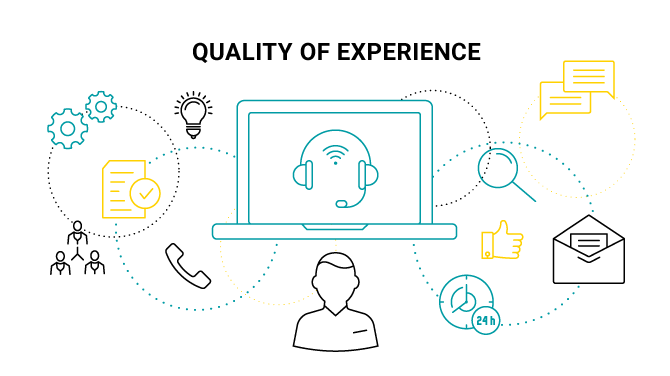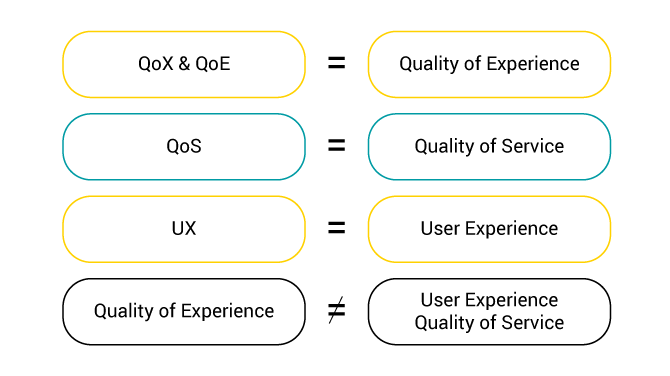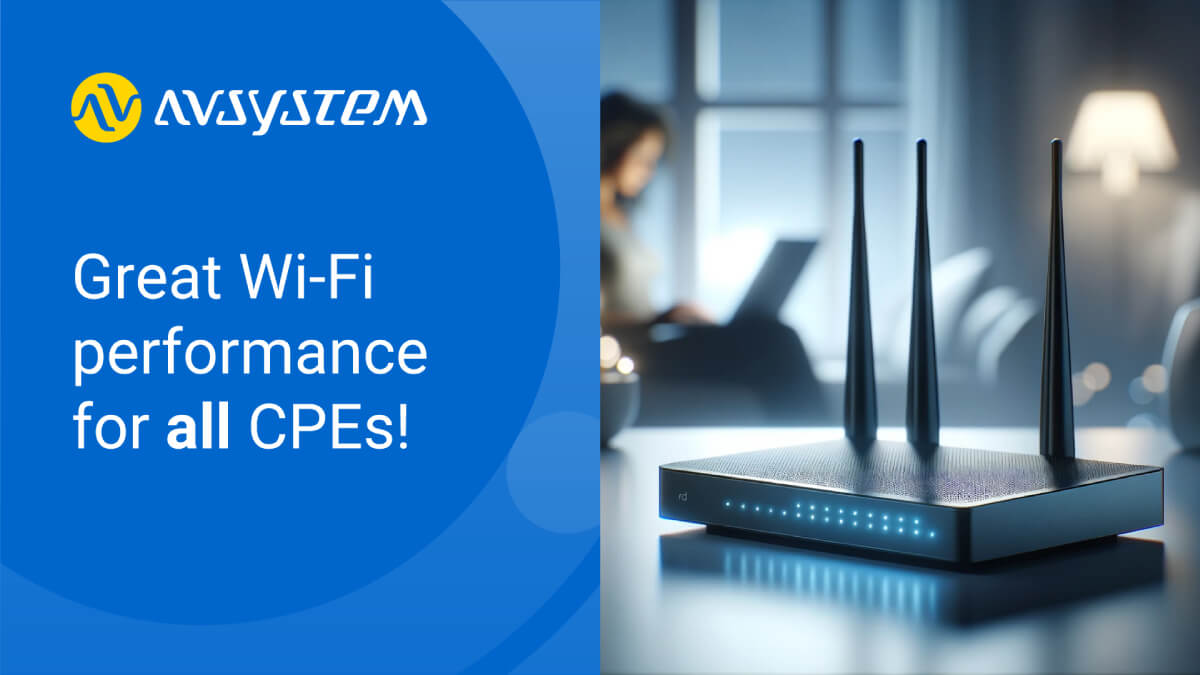Quality of experience (QoE) in telecommunications services

Many would agree that digital communication is one of the driving forces for the growth of businesses and societies, and it is quite normal that everyone expects the best quality in the telecommunication services that they use in their everyday digital interaction. In the harsh market reality of today, the customer perspective will surely tell us that if a service fails to provide the highest quality, it will be jilted sooner or later. At the other end of the line, service providers may not be fully aware either of their customer’s needs nor about the tools that may be used to prevent their dissatisfaction. To close this gap, the notion of the Quality of Service has been introduced as a measure for getting into the boots of the users and ultimately, offering better services and solutions.
What’s in Quality of Experience (QoE)?
But the abundance of overlapping concepts and their puzzling abbreviations surrounding the concept of quality measures doesn’t seem to facilitate the task of understanding the importance of Quality of Experience in telecommunication services. You might have already come across such terms as UX, QoS, QoX or QoE; while all of these are useful for determining both qualitative and quantitative parameters of interaction between the user and a system or service, there is a recent consensus among the experts that key importance should be assigned to the idea of Quality of Experience (abbreviated either as QoE or QoX). Let’s follow this concept to see the source of its popularity and the rewards behind it.

Being by far the most comprehensive method for researching customer satisfaction, QoE has been widely adopted across many disparate consumer-related industry environments. But since its inception, the Quality of Experience paradigm has been applied mainly in the field of telecommunications, and this is where its research instruments are at its sharpest and its measures are most accurate. Being in a way similar to the notion of Quality of Service (QoS) that intends to measure, improve and guarantee software and hardware characteristics, QoE in telecommunications is far more comprehensive and wider in scope.
Quality of Experience (QoE) definition
Boiling it down to a simple and matter-of-factly definition, it can be said that Quality of Experience is the measure of the overall level of satisfaction of a user with a service from the user’s perspective. But next comes the hard part. What true QoE really intends to measure is not only the objective parameters of system performance (like QoS does). It aims at embracing the subjective experiences of the service user, with all their complexities and human-dependent variables like the physical, temporal and even social and economic factors.

With that said, is this at all possible to measure accurately someone’s subjective feelings about a thing that they are using at the time of using it and to draw useful conclusions from the gathered data? The straightforward answer is: yes (imagine that it’s a ‘no’; the article would have to end here!), but there are ‘buts’ to it. The task of measuring QoE in telecommunication services is highly complex and cannot be realized successfully without the right tools in place to collect the right data for analysis. Moreover, you have to be aware of which service parameters are essential for the user to enjoy the service. Therefore, the essence of determining QoE in a particular case depends not so much on the volume or scope of what is to be measured and transformed into metrics. It is rather about knowing which of many service parameters are essential factors in user satisfaction and about measuring them from a perspective as close to the user’s perception as possible.
How to ensure Quality of Experience (QoE)
Over the years, the awareness of how QoE helps to improve user satisfaction and, ultimately, user loyalty, has been growing among the telecommunications operators. As a result, there have emerged solutions especially dedicated to monitoring Quality of Experience parameters in telecommunication services. But since Quality of Experience aims to encompass every factor that contributes to the user’s perception of the service quality, including human, system and context-related aspects, it is extremely challenging to produce reliable and unbiased conclusions on their basis.
Therefore, out of all the factors influencing the results of a QoE check, the network and performance-related parameters probably are the most relevant and objective, as long as they are measured. Among the globally-recognized leaders in this field is AVSystem'sUMP multiprotocol platformused by telecommunications operators to manage, control and monitor the performance of their network infrastructure.

Offering a comprehensive QoE solution, UMP helps to measure the end-to-end performance of networks and devices using real-time diagnostic tools and flexible monitoring mechanisms. These can be suited to practically any QoE measurement scenario, allowing the operators to react immediately to any arising issues thanks to presenting the performance parameters from the user’s perspective.
But UMP is not only about QoE measurements and metrics. Another great feature in the context of QoE is the smart monitoring and managing of Wi-Fi services. Thanks to the automated Smart Workflows engine, telco operators can save their time in manually fixing repetitive network issues of their customers, greatly influencing their experience with the system as well as with the operator’s customer care services.
Quality of Experience (QoE) matters
In telecommunication services, the subscriber loyalty depends on the end-user QoE level. Quality of Experience goes down deeper than Quality of Service in ensuring that the objective service performance parameters, as well as subjective user impressions, are kept on a high-level. Thus, service providers need to know their users’ QoE in real-time to be able to improve their services on-the-fly. With UMP, user experience with telco services can be ensured end-to-end.
Recommended posts
- Understanding CPE Requirements for Optimizing Smart Wi-Fi Performance
- Why choose open standards for WiFi service assurance?
- Solving Key Challenges of Fritz!Box Users With Cloud ACS
Subscribe to stay in the loop with all our latest content:
Recommended posts



